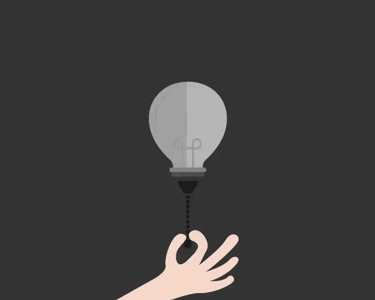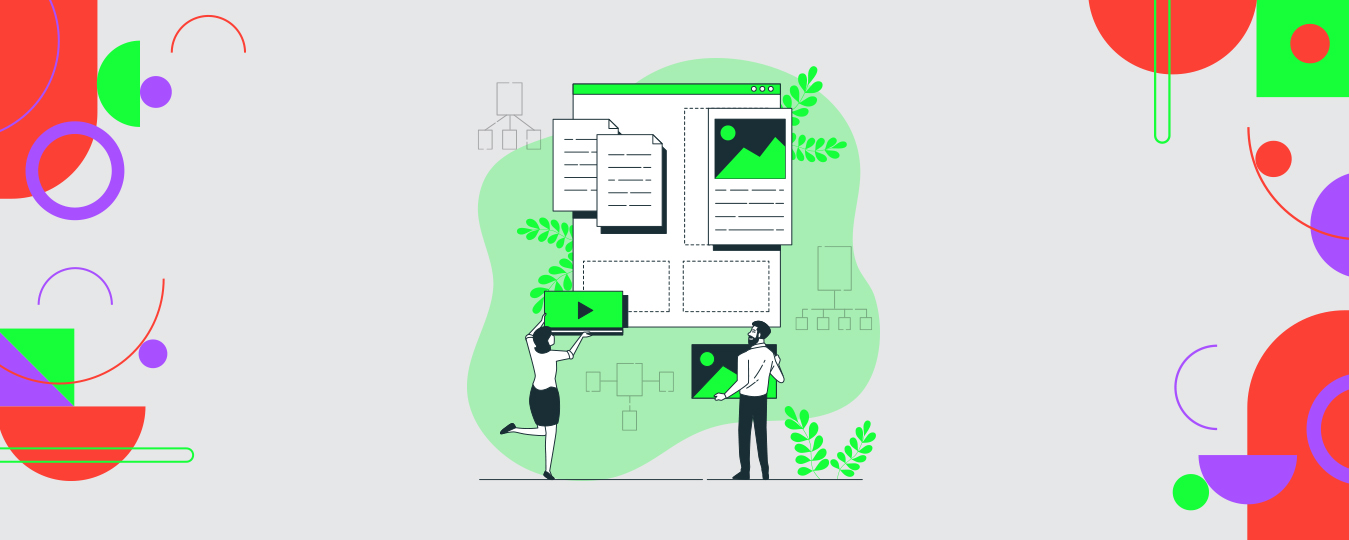As per interaction-design.org “User experience (UX) design is the process design teams use to create products that provide meaningful and relevant experiences to users. This involves the design of the entire process of acquiring and integrating the product, including aspects of branding, design, usability, and function.”
Notice the use of the phrase “meaningful and relevant experience”? Well, that is because, at its core, user experience design is deeply correlated to problem-solving. Knowing what could possibly be a meaningful experience for the customer, and then working towards offering the very same through UX design of an app, website or a platform is precisely what makes UX design highly sought after. After all, only if the UX design efficiently addresses and solves a problem, will a customer come back to an app or website, and contribute to its bottom line.
Now the Question Arises – “How to Solve Issues with UX Design”?🧐
The answer to this question lies in 5 steps, which in a way form a framework for innovation!
Step 1 – Formulate a Problem Statement
If, for example, your car was making an uncanny noise, and you went to a mechanic, he would start the car, take it for a short run, see where the sound was coming from, and based on these observations let you know of an ideal repair that would solve the problem.
Similarly, when your customers or a focus group report an issue with your app or website, you would locate the issue, understand the underlying cause for the same, and offer a probable solution for it.
This is what is known as formulating a problem statement, wherein one understands the problem, analyses one or more reasons that may be causing it, and based on their experience, offer a possible resolution.
A good problem statement aids as a guide that not only facilitates the creative process but also ensures that the UX design team stays on track to explore new ideas and solutions.
Step 2 – Derive Methodical Empathy
In order to ensure that the problem statement is comprehensive, UX designers will need to empathise with the users. A great way to do so is by using the 5 Ws viz. Who, What, When, Where and Why!
- Who is experiencing the problem?
- What is the problem?
- When does the problem occur?
- Where is the problem?
- Why does this problem exist?
In order to find answers to these questions, market research can prove to be ideal. Alternatively, one can design a thorough questionnaire for the focus group to answer, and deduce the responses from the same. Once all the inferences are acquired, they can then be collated to form ideas that can help create a bigger picture pertaining to the problem.

Step 3 – Ask Why?
After the 5 Ws comes the 5 Whys. Since the primary answer of a respondent can often be superficial, it is essential to dig deeper by asking more questions revolving around the “why”.
For instance, if the problem revolves around users forgetting to log in to their gratitude list on their daily journal, the 5 Whys can be as follows –
- Why don’t people consistently log in their gratitude list?
They might be busy and therefore tend to forget.
- Why do people forget?
Logging into a journal is not a part of the daily regime.
- Why isn’t it a part of their regime?
It is something they want to do, but if not taken care of it doesn’t have any negative impact.
- Why isn’t there a negative impact?
It is due to the lack of a feature that gives them a strike, every time they forget to log in.
- Why do users need a feature like a strike?
Simply to give them a gentle nudge to overcome their forgetfulness and make journaling a part of their daily regime.
As one might understand, the 5 Whys help look past the surface and understand the problem on a deeper level. Having the answers to this question can prove to be pivotal in finding the apt solution.
Step 4 – Conduct Empathetic Research
While we have touched upon market research earlier, it simply isn’t enough to collect raw data or rely on numbers. Remember how UX is all about providing meaningful and relevant experiences to users, “user” being the key element here. Hence, the data collected from the research needs to be formulated into something that is evocative and lets the designers know all about the actual need of the user. The goal here is to draft a solution, the need for which was not even known to the user.
Step 5 – Communicate the Problem Well
Once the problem has emerged clearly through the aforementioned steps, the next stage is all about clear and concise communication. Every person who is involved with the UX design should be aware of the problem in the simplest of terms such that they can contribute towards solving the same.
Step 6 – Solve The Problem
As obvious as this stage sounds, its relevant aspects may not cross everyone’s minds. To begin with, a quick prototype ought to be created, after which the prototype needs to be tested. Next, usability testing with a focus group or a set of end users should be conducted to analyse whether the solution is validated or not.
To make sure that the problem is solved in the most effective manner possible, there must be ample emphasis laid on three distinct aspects –
- The solution should be human-centered.
- The solution should be concise enough to be manageable but should have ample space for exploration.
- The solution should have elements of creativity, to ensure a higher value proposition for the users.

As is the case with many other aspects, the development of problem-solving in design is a process that takes time, patience, and practice. However, following the above-mentioned steps will ensure that you’re headed in the right direction, and will help improve and enhance the user experience for your website or application!
FAQ’s About Problem Solving Capabilities of UX Design
How to best frame the problem statement with respect to UX Design?
In order to frame a simple yet effective problem statement, one must ensure the following –
- Define the Scope of the Problem
- Ask and Answer the Whys
- Avoid Proposing Solutions
- Make the Statement Understandable
What are the 4 Ds of design thinking as stated by the UK Design Council?
As per the Design Council of the UK, the 4Ds of Design Thinking are –
- Discover
- Define
- Develop
- Deliver
What are the Problems that UX Design Practitioners work towards solving?
More often than not, UX design is all about ensuring that a product experience is tailored so as to meet the customers’ needs and wants. UX designers work with the core belief, that in order for a product or design to be successful, it ought to solve some base problems. Whether the problem is something simple such as changing a user’s status from unregistered to registered for an event, or something more complex such as communicating a brand’s core values to its intended users, UX designers work towards resolving these issues, and ensuring that every feature on an app or website solves an issue, and isn’t simply there for the sake of it.




